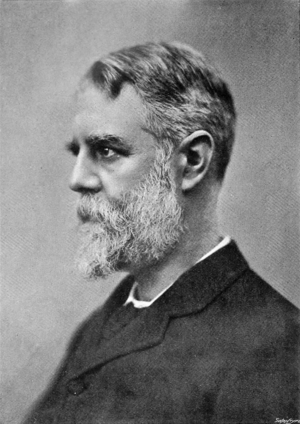Henry Trimen facts for kids
Quick facts for kids
Henry Trimen
|
|
|---|---|
 |
|
| Born | 26 October 1843 Paddington, London, England
|
| Died | 16 October 1896 (aged 52) Kandy, Ceylon
|
| Citizenship | British |
| Scientific career | |
| Fields | Botany |
| Author abbrev. (botany) | Trimen |
Henry Trimen (October 26, 1843 – October 16, 1896) was a British botanist. A botanist is a scientist who studies plants. He is well-known for his important work in Sri Lanka, which was called Ceylon back then. He helped identify and name many plants, especially those belonging to the Dipterocarpaceae family.
Contents
Early Life and Education
Henry Trimen was born in London, England, in 1843. His older brother, Roland Trimen, was an entomologist, a scientist who studies insects. Henry went to King's College School in London. He also studied medicine at King's College Medical School in Edinburgh. However, he never worked as a doctor.
A Passion for Plants
Like his brother, Henry enjoyed collecting natural history items. But he soon decided to focus only on plants. In 1860, he began his medical studies. He spent time at the University of Edinburgh in 1864. There, he worked as an assistant to Professor Bennett. He also became good friends with Professor J.H. Balfour. Balfour was part of the Botanical Society of Scotland.
Henry Trimen was very involved in the scientific community. From 1867 to 1872, he worked at King's College, London. He was the curator of the medical museum there. He also taught botany at St Mary's Hospital Medical School. In 1869, he joined the plant department at the British Museum.
Work in Ceylon
Henry Trimen became the director of the Royal Botanic Gardens in Ceylon. Today, these gardens are known as the Botanical Garden of Peradeniya in Sri Lanka. He held this important job for 16 years. He took over from another famous botanist, George Henry Kendrick Thwaites.
Important Projects
In 1883, Henry Trimen took part in a special project. This project involved a plant called Cinchona. Cinchona is important because it is used to make medicine. This work took place in the Nilgiri Mountains.
While in Ceylon, Trimen did many great things. He started the Museum of Economic Botany. This museum showed how plants could be useful for people. He also created smaller gardens in Badulla and Anuradhapura.
The Flora of Ceylon
His biggest project was writing a book called The Flora of Ceylon. A "flora" is a book that lists and describes all the plants in a certain area. This was a huge task. Sadly, Henry Trimen passed away before he could finish it. Other scientists completed the book after his death.
Recognition and Legacy
Henry Trimen was recognized for his scientific contributions. In 1888, he became a Fellow of the Royal Society. This is a very high honor for scientists in Britain. He was also a Fellow of the Linnean Society of London. Henry Trimen died in Kandy, Sri Lanka, in 1896. His work greatly helped us understand the plants of Sri Lanka.

